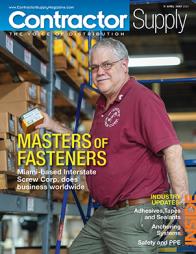MAPI: Manufacturing leading recovery
The recovery in the U.S. domestic manufacturing sector is stronger than the general economic recovery,according to a new report from the Manufacturers Alliance/MAPI.
The reason for the disparity is because the manufacturing industry took the brunt of the decline in the downturn, according to the U.S. Industrial Outlook: Industrial Recovery Gaining More Solid Footing (ER-696), a quarterly report that analyzes 27 major industries.
By supplying major assumptions for the economy and running simulations through the IHS Global Insight Macroeconomic Model, the Alliance generates unique macroeconomic and industry forecasts.
“A recovery is clearly under way. Monthly data for manufacturing production indicate that the recession, which started in January 2008, ended in June 2009,” said Daniel J. Meckstroth, Ph.D., chief economist for the Manufacturers Alliance/MAPI and author of the analysis. “The worst of the inventory destocking is ending; inventories do not have to be built to increase production as output growth can result from less liquidation. The inventory swing has had a positive effect on production and was evident in the fourth quarter (2009).”
Manufacturing industrial production, measured on a quarter-to-quarter basis, grew at nearly a 6 percent annual rate in the fourth quarter of 2009 following healthy 8 percent growth in the third quarter.
Production in non-high-tech manufacturing expanded at a 5 percent annual rate in the fourth quarter. According to MAPI’s quarterly economic forecast, non-high-tech manufacturing production is expected to increase 3 percent in 2010 and grow by 5 percent in 2011. High-tech industrial production rose at an 8 percent annual rate in the fourth quarter. MAPI predicts it will post impressive 15 percent growth in 2010 and 18 percent growth in 2011.
There was a significant upward trend in the 2009 fourth quarter figures for the various components of the manufacturing economy. Twelve of the 27 industries tracked in the report had inflation-adjusted new orders or production above the level of one year ago, seven more than reported in the third quarter of 2009, and one industry remained flat. Steel production grew by 49 percent while basic chemicals advanced by 16 percent.
The largest drop came in construction machinery production which declined 27 percent while mining, oil field and gas field machinery experienced a 26 percent decline.
Meckstroth reports that 12 industries are in the accelerating growth (recovery) phase of the business cycle; no industry is in the decelerating growth (expansion) phase; two industries, private nonresidential construction and mining, oil field and gas field machinery, appear to be in the accelerating decline (either early recession or mid-recession) phase; and 13 are in the decelerating decline (late recession or very mild recession) phase of the cycle.
The report also offers economic forecasts for 24 of the 27 industries. The manufacturing sector should show improvement in 2010, with MAPI forecasting 17 of 24 industries to show gains, led by steel production with expected 35 percent growth and housing starts with 34 percent growth. The recovery should continue in 2011 with growth likely in 22 of 24 industries, including nine industries which are predicted to grow at double-digit rates, led by housing starts at 70 percent, albeit from current historically low levels, and engines, turbines and power transmission equipment at 28 percent.















